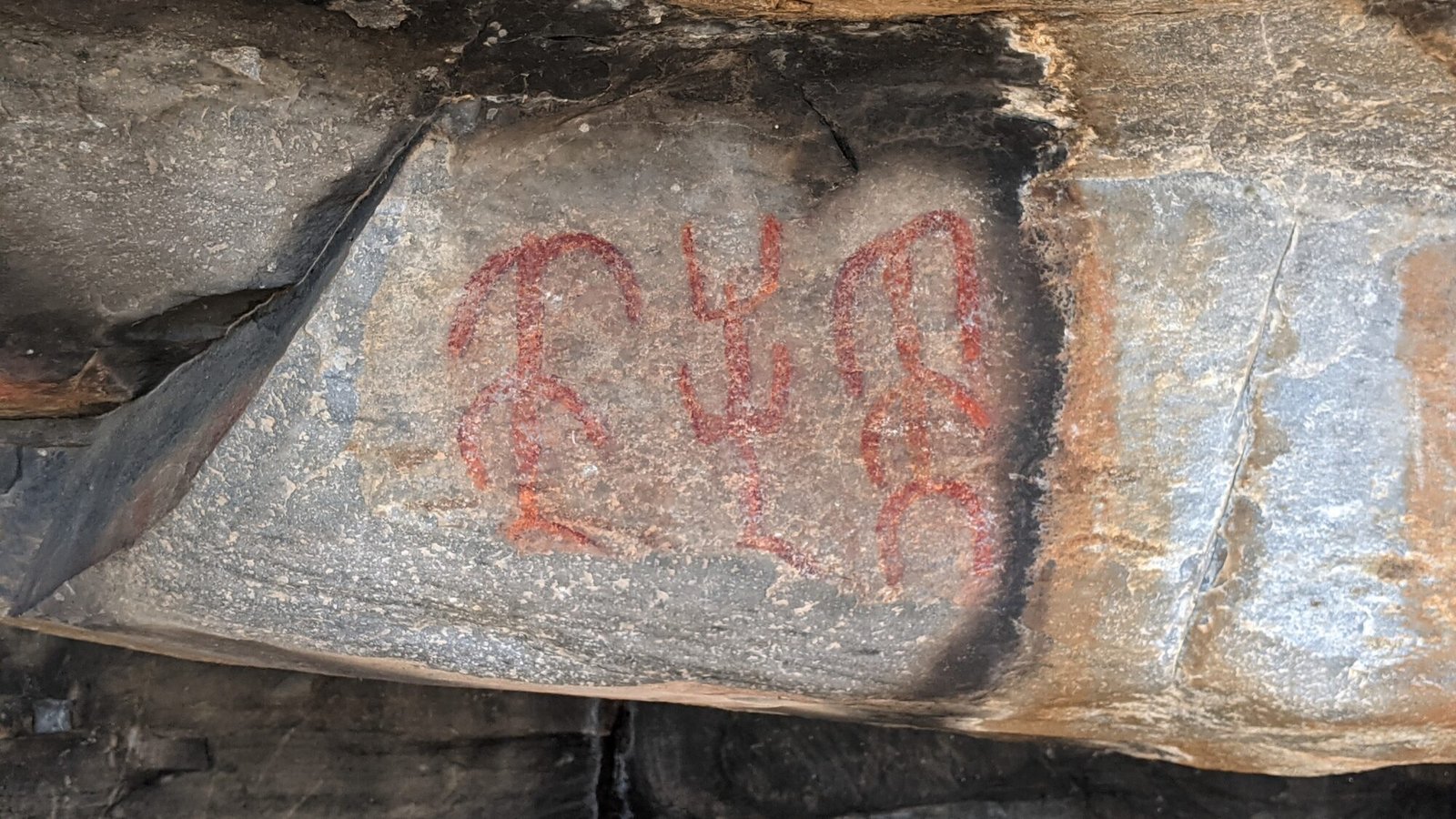Protected by the overhanging rock, the red stains stand out. Even after five thousand years, the shapes and designs can still be made out. What their significance is, we can only guess. Some depict people, others animals, while others are abstract symbols. One panel shows groups of lines: were these ancient people keeping count of something?




These paintings were first studied and researched (in modern times!) at the beginning of the 1900’s and they have been analyzed extensively. It was originally called the Abrigo (shelter) of the Vale de Junco (valley of reeds), but as more shelters were found in the surrounding Louções Hills, this site was given the name of Lapa dos Gaivões after the common swifts which nested in the shelter and some paintings seemed to be birds in flight. In 1970, the site was designated as a National Monument (named “Abrigo das Pinturas de Vale de Junco”).
Location
Access
There is easy access to the paintings. From Esperança, you head towards the Spanish border (Várzea Grande) and then turn right towards Hortas de Baixo. About 2km later, you turn right and head 1km down to the parking spot at the foot of the Louções hills. From the parking spot, there is a well graded and marked path up to the “abrigo” or shelter. There is a wooden walkway that you follow, observing the paintings from the walkway.
Signage

Just outside of Esperança, a road sign (left photo) indicates the “Pinturas Rupestres” (rock paintings) are on the road to the right.
About 2km later, another sign (right) indicating the turn off to the “Pinturas Rupestres” (rock paintings).
About 1km down the road, as the tarmac ends, there is a parking spot with signs describing the paintings.

Links
- Description from Natura.pt (in English)
- Article from National Geographic (in Portuguese)
- Description and map (in Portuguese) from the town hall of Arronches
- A video tour by Dra. Ana Mafalda Cardeira (University Lisboa)
- Designation as national monument (in Portuguese) from the government’s Directorate-General of Cultural Heritage
Nearby
There are many rock painting locations in the surrounding hills. The sign at Abrigo dos Gaivões lists two, Abrigo dos Louções and Igreja dos Mouros, but says they are on private lands. There have been academic research on several sites, but they are not signposted.

Pingback:Welcome to Prehistoric Portugal! - Prehistoric Portugal